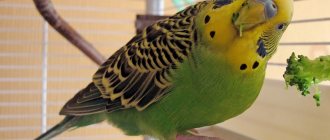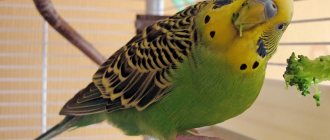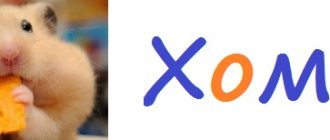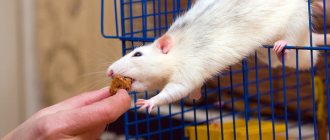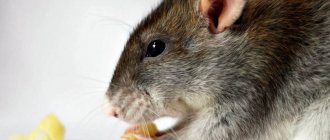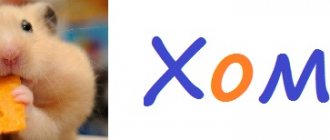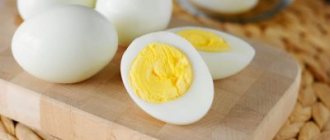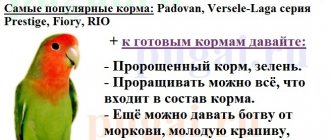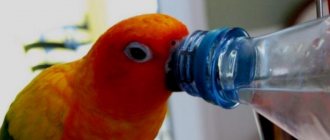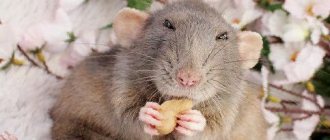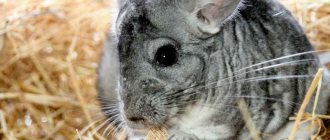The benefits of fruits have long been justified, but few people know that the peel of some of them is healthier than the pulp. However, many people are too skeptical about this and prefer to get rid of the tough top. This is quite reasonable when it comes to store-bought products, because in modern environmental conditions it is quite difficult to find out how healthy they are. But if we are talking about homemade vegetables and fruits grown on our own, cutting off the skin is not the most logical and correct decision.
Scientists have long found out that beneficial vitamins are not distributed in the most uniform way. Thus, the peel contains several times more vitamin C than the pulp. Thus, by cutting it off, a person loses the most useful thing. The peel of fruits also plays an important role for parrots, so a caring owner should always remember this. To better understand how many beneficial substances are contained in certain crops, you should carefully familiarize yourself with some of them.
Orange
This citrus fruit is rich in vitamins C, beta-carotene and fiber. As for its peel, there are also many benefits here. If we look at it in more detail, the amount of all useful substances is doubled here.
In addition, there are flavoins that have a positive effect on blood vessels. In addition, this substance helps reduce the risk of heart attacks. In this case, fruit peels will become a healthy treat for parrots that will improve their health.
How to train a parrot to eat fruit?
Firstly , it is worth presenting the parrot with fruits in various forms - slices, pureed, large pieces and even in the form of freshly squeezed juice. Experiment and combine the form in which you present food to your pet: rub, mix or give in the form of juice. It is worth noting that the juice is very easily absorbed in the digestive system. For example, green juice from kale and dandelion is best mixed with carrots and apples. The bright orange color of carrot juice and its sweet taste are generally enjoyed by parrots. And the vitamin A contained in the juice boosts the immune system and is a powerful antioxidant. Parrots are able to absorb almost 100% of the beta-carotene in carrot juice, versus 1% when they simply eat fresh carrots.
Secondly , eat healthy foods in front of your feathered pet yourself. The birds' curiosity and the owner as a role model are the best ingredients for persuasion.
Thirdly , use special accessories and holders with which you can bring food into the cage. These are plastic clips and various types of fruit holders in the form of skewers and skewers. Such accessories can be perceived by birds as a fun toy. And the chances that your pet will simply try a new product will increase.
If, despite all your efforts, your feathered friend simply bites off and throws away everything you offer him, do not be upset. In this case, even a drop of juice gets to the parrot. Give the bird time to taste the treat. Your patience and perseverance will be rewarded!
Lemon, grapefruit
These fruits have a positive effect on the intestines and blood system. It is important to note that many people, when consuming grapefruit, try to remove the partitions from it, but they contain a sufficient amount of useful components. The main thing is to choose a citrus fruit with a smooth rind.
Fruit peels for parrots should be a mandatory product in the diet. Moreover, it is best to give them the fruit along with the skin, and add finely chopped zest to the porridge separately.
Parrots need vegetable peels just as much. Therefore, you can safely give cucumber skins to budgies, cockatiels and others. Tomatoes, eggplants, carrots and beets. All these products contain a large amount of useful substances that are so necessary for the normal development of pets.
What fruits can you give your parrot?
Apples, pears, oranges, tangerines, grapefruit, bananas, grapes, peaches, apricots, plums, cherries, raspberries, currants, gooseberries, strawberries, blueberries, watermelon, melon, pineapple, kiwi - all these berries and fruits can be given to a parrot. Below are some useful tips for each of them.
- Apples and pears are probably the most common fruits that can be offered to your pet year-round. It is better to remove the seeds first.
- Citrus fruits (orange, grapefruit, tangerine) are excellent sources of vitamin C. You can give them with seeds, but be sure to peel them.
- Bananas are a nutritious and tasty treat. Make sure the bananas are ripe (yellow). Overripe and underripe bananas should not be included in the diet. The banana peel must be removed.
- grapes – both white and black can be offered with seeds.
- raspberries, currants, gooseberries, wild strawberries, blueberries - various berries are ideal for the parrot's summer menu. And for use in the winter season, freshly picked berries can be pre-frozen in reserve. Before eating, allow the berries to defrost completely at room temperature.
- Peaches, apricots, plums and cherries are excellent fruits/berries for birds, but be sure to remove the pits, which contain hydrocyanic acid.
- watermelons and melons - offer only those that you have already tried to avoid the risk of poisoning that occurs in people. You can give both the pulp itself and the seeds.
- Pineapple is a healthy food product containing many vitamins. Peel and core.
- Kiwi is a leader in the source of vitamin C. It must be peeled.
Everything you offer your pet must be washed thoroughly, even if it comes from your environmentally friendly summer cottage. Fruits can be offered both fresh and dried. By dried we mean homemade. Candied dried fruits in a regular store are not suitable for parrots. You should also remember that such tropical overseas wonders as papaya and mango, which are often brought to Russia unripe, which makes them toxic to birds. Therefore, if you are not sure about the ripeness of papaya and mango, then it is not recommended to give them.
Mix familiar food with new food
If the bird refuses to try new food, then you can put fresh vegetables nearby in the feeder where dry food is usually poured. Remember to reduce the amount of dry food. Knowing that there is food in the feeder, the parrot will sooner or later try new food. Especially if he didn’t eat enough and remained half-starved. The usual food can also be sprinkled with the same grated carrots. The parrot will be forced to try a piece of new food while reaching its favorite dry food. For some, this process of starting tasting drags on for a week, while others decide to try it on the first day.
Symptoms
If your feathered friend refuses to accept fruit treats, then you should take a closer look at the accompanying symptoms:
When a parrot does not want to eat the fruits offered, but at the same time its activity is high - it flies well, chirps, and leads its usual lifestyle, then you should not worry too much. You need to be patient and persistent and continue to offer apples, pears, bananas, and tangerines. If accompanying symptoms occur, you should take a closer look at the appearance; perhaps the pet has become infected with parasites that prevent it from eating, and the swallowing process causes pain. If you cannot determine the disease on your own, you should consult a veterinarian.
Greenery and tree branches
Green food in the diet is no less important than grain and succulent food. Greens contain a large amount of moisture, and thanks to the twig food, the parrot wears down its beak every day.
- What greens can be given to a lovebird: dandelion, plantain, nettle, plantain, lettuce, carrot tops.
- The branches of which trees can be fed to the lovebird: birch, willow, aspen, hawthorn, alder, ash, linden, elderberry, maple, apple, viburnum, cherry, rowan, raspberry, currant.
It is best to collect greenery and tree branches from summer cottages. In urban areas, you can only collect away from the road, where there is no dust and dirt. The greens need to be washed under running water and fed to the parrot. Tree branches must be cleaned of dirt, washed under water, and then scalded with boiling water to destroy the parasites that live in the bark. The branches need to be cut into small pieces, 5-10 cm long, and left in the cage.
What to look for when choosing vegetables and fruits
When choosing an assortment of vitamins for your budgerigar, focus on the appearance of the fruits and root vegetables. They should not raise suspicions about quality. Choose fruits and vegetables that are ripe, fresh, and free from mold and rot. Don’t try to experiment with nutrition, just give what you know. If possible, feed only seasonal fruits.
The main diet of a budgerigar is a grain mixture, but a vegetable and fruit menu is also important in the pet’s diet. To maintain health, vitamins and minerals play an important and major role. When eating a variety of food, the parrot’s body receives all kinds of components that saturate the body with all the necessary nutrients.
Follow the rules and regulations for feeding your pet. In return, you get a healthy, active and good-humored parrot that will delight you for many years of life. If you liked the article or have something to add, leave your comments and also join our VKontakte group.
Pomegranate
Another product undeservedly included in the “prohibited” lists due to the high content of tannins. The bird's body's need for tannin has already been discussed in the article:
What else is pomegranate peel good for the bird’s body, besides tannin? The chemical composition of pomegranate peel is of particular interest, since it contains a very large number of macro- and microelements. The peel contains: choline, potassium, manganese, cobalt, magnesium, iron, zinc, copper, silver, selenium, nickel; in addition: tannins, ursolic acid, lysine, valine, leucine, phenylalanine, threonine, pigments, vitamin E and B vitamins, as well as antioxidants. Pomegranate peel has a number of beneficial properties, including antioxidant, astringent, anti-inflammatory, antimicrobial, and wound-healing properties.
Pomegranate and citrus peels prepared for drying.
Pomegranate peel is a real boon for the intestines of birds and more. Thanks to its qualities, pomegranate peel helps fight against enteritis, which is NOT uncommon in birds. Here's the latest research on the beneficial properties of pomegranate peel:
British scientists from Kingston University have found properties in pomegranate peel to treat antibiotic-resistant staphylococcus and other common infections. Research has found that when combined with two other natural products - metal salts and vitamin C - the anti-infective effectiveness of pomegranate components increased significantly. Doctors have developed an ointment from this composition, which, according to them, can successfully attack drug-resistant microbes.
Laboratory testing was carried out using microorganisms such as methicillin-resistant Staphylococcus aureus. This type of staphylococcus is an important pathogen and agent that provokes the development of an infectious disease, which is difficult to combat due to the resistance of bacteria to antibiotics. Recently, doctors are increasingly identifying infections that are mutating towards drug resistance. An ointment based on pomegranate extract, without any obvious side effects, most effectively and quickly helped cope with bacteria.
All this suggests that often, out of ignorance, we deprive our feathered pets of a very important and vital part of the diet, causing very significant damage to the bird’s health. Pomegranate peel should be present in the bird's diet. It is easy to prepare for future use and use by adding it to the composition of “mowers”.
Grain mixture
The main food for lovebirds is a grain mixture. It should make up at least 60% of the daily diet. Grain feed can be purchased ready-made, or you can prepare it yourself. Of the ready-made lovebird mixtures, food is only suitable for medium-sized parrots. It is not recommended to use ready-made food for small and large species.
The most common brands of grain mixtures for lovebirds: Rio, Padovan, Fiory, Versele-Laga. You can buy this food at any store.
Before purchasing, you must check the expiration date. The grains must be in sealed packaging. Before feeding, grain must be checked for quality. The surface of the grains should be smooth and glossy, there should be no damage or musty smell.
The grain mixture includes: red, yellow and black millet, oats, wheat, corn, canary seed, rapeseed, sesame, buckwheat, hemp seed, Abyssinian noug, safflower, as well as pieces of dried vegetables and fruits.
The daily norm of grain mixture for lovebirds is 2-3 teaspoons.
Methods for solving the problem
The most difficult thing is to teach wavy animals to eat fruits. If a budgie does not eat fruit for a long time, it is recommended to enrich its diet with vitamin complexes or a grain vitamin mixture. Larger bird species eagerly eat all fresh and dried fruits offered.
The demonstration method works well when the owner shows visually and emotionally that the food is very tasty. You can put a piece of pear on the cage or between the bars and pretend that it is very tasty. The owner's affectionate voice and demonstration of eating often encourages the bird to come up and try. Until the parrot learns to eat on its own, its diet should be enriched with vitamin complexes. Among these, a liquid composition added to the drinker has a good effect. Care and patience are all that is necessary for a bird to learn to eat fruits.
Source
